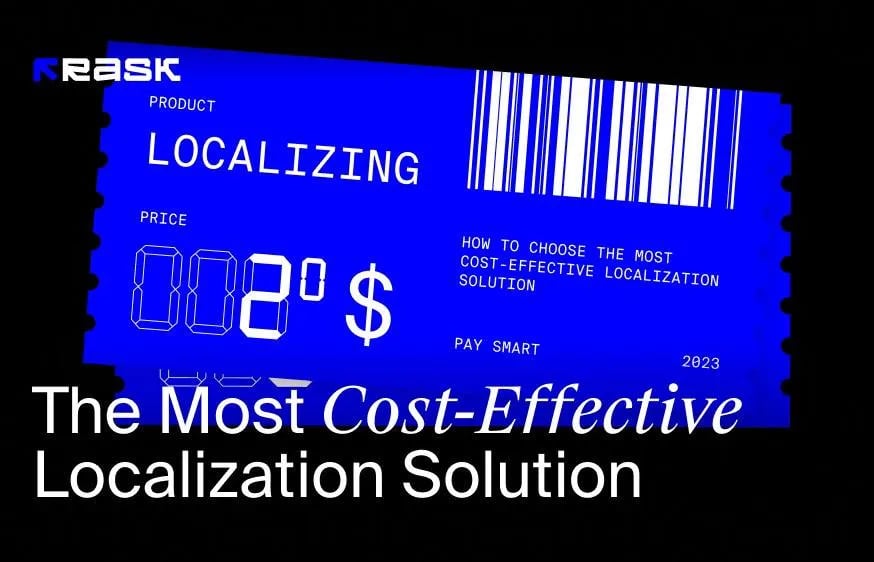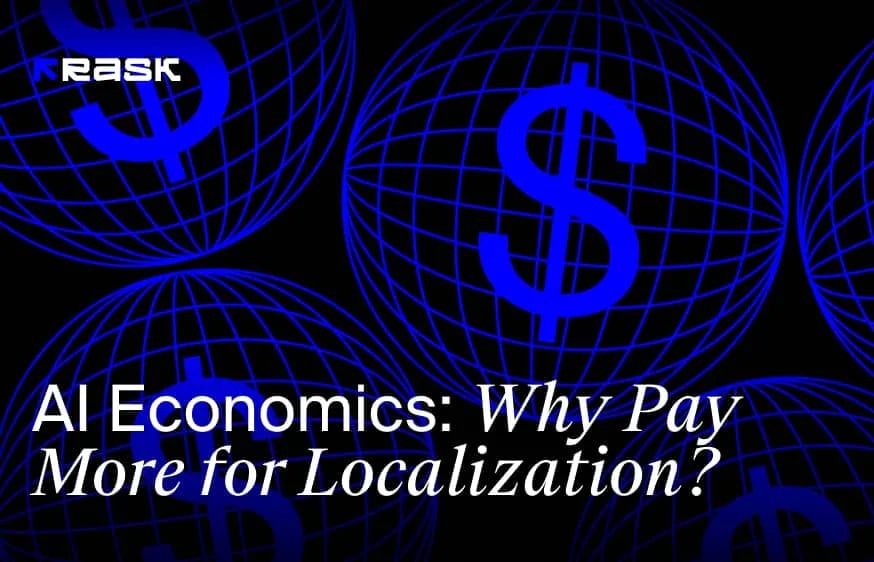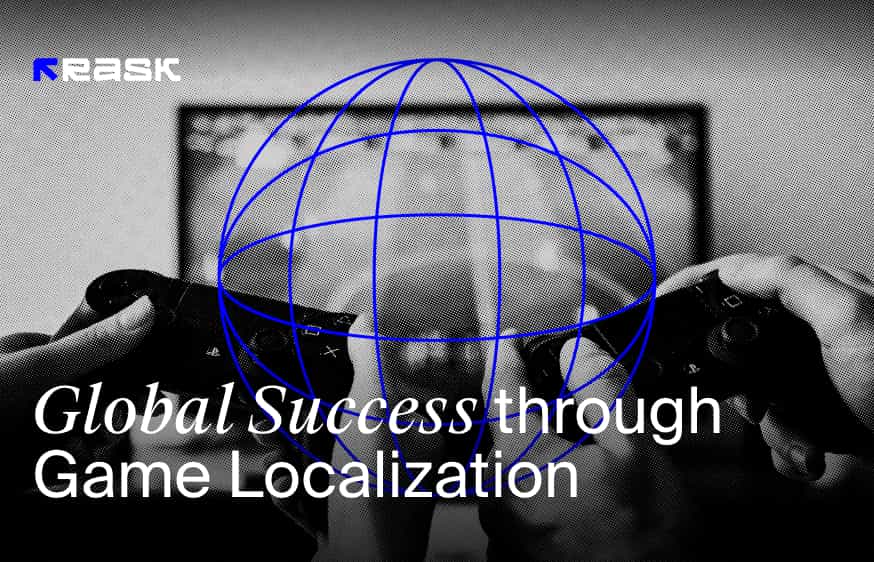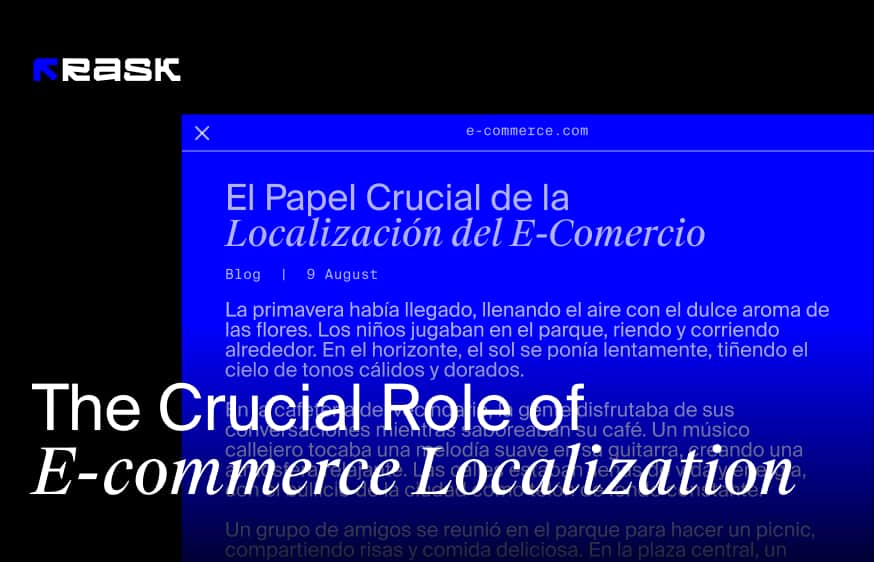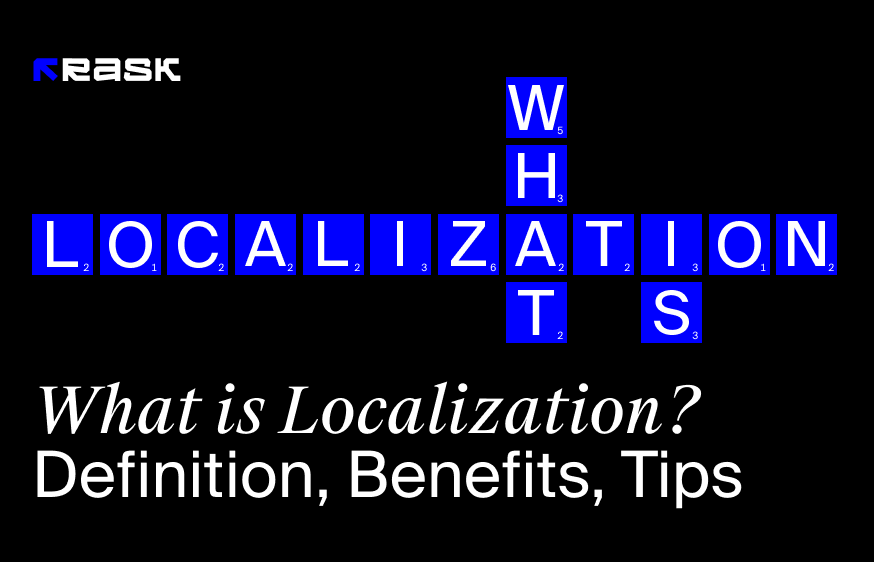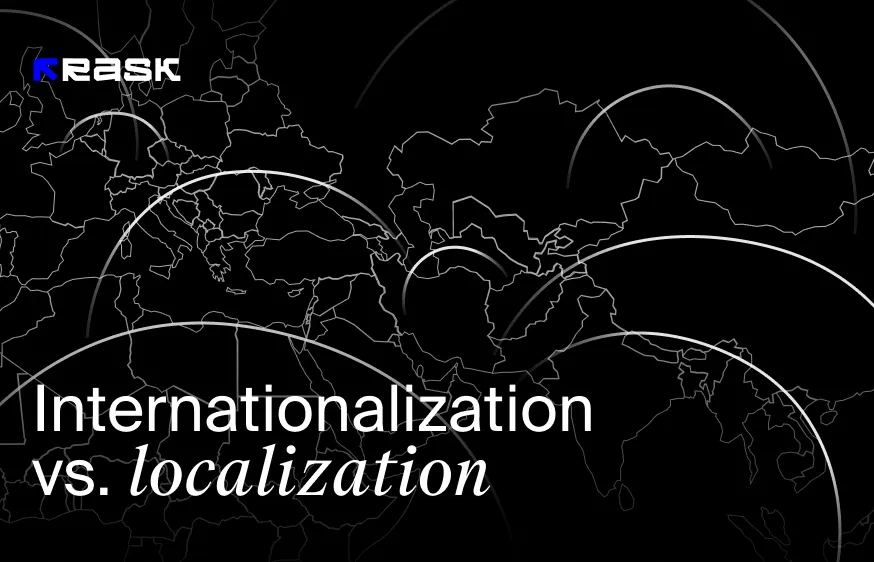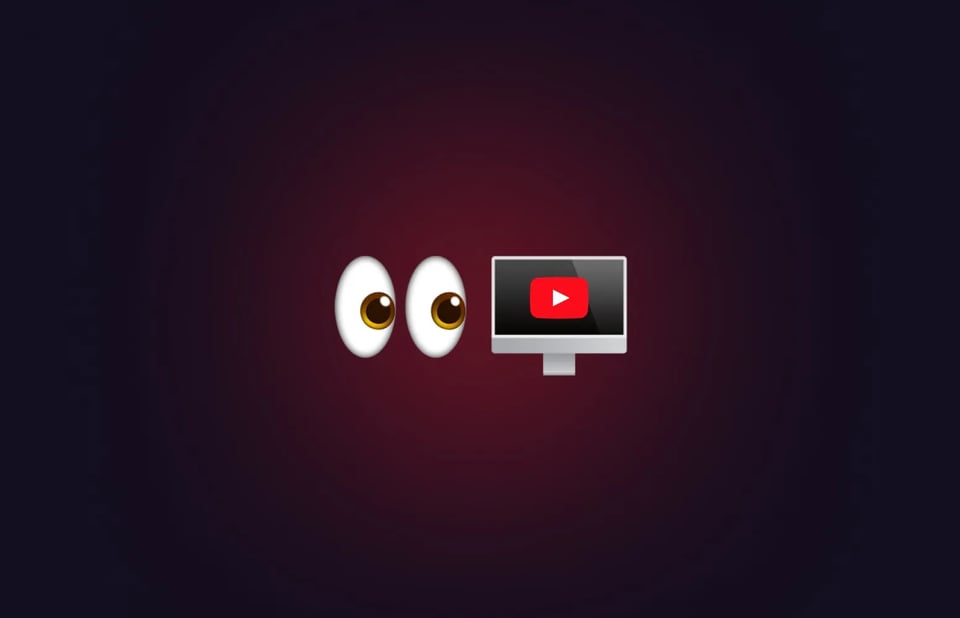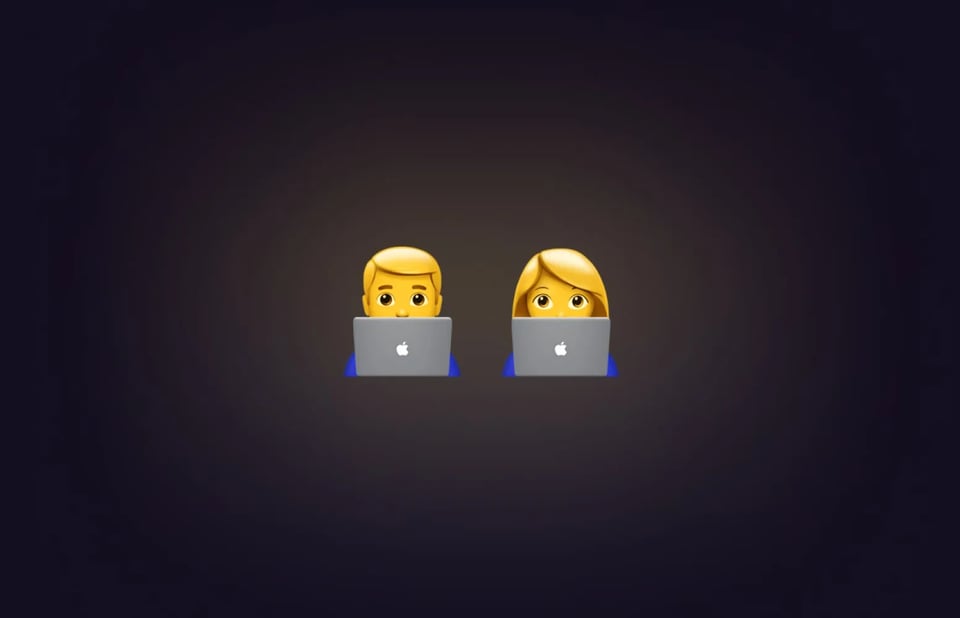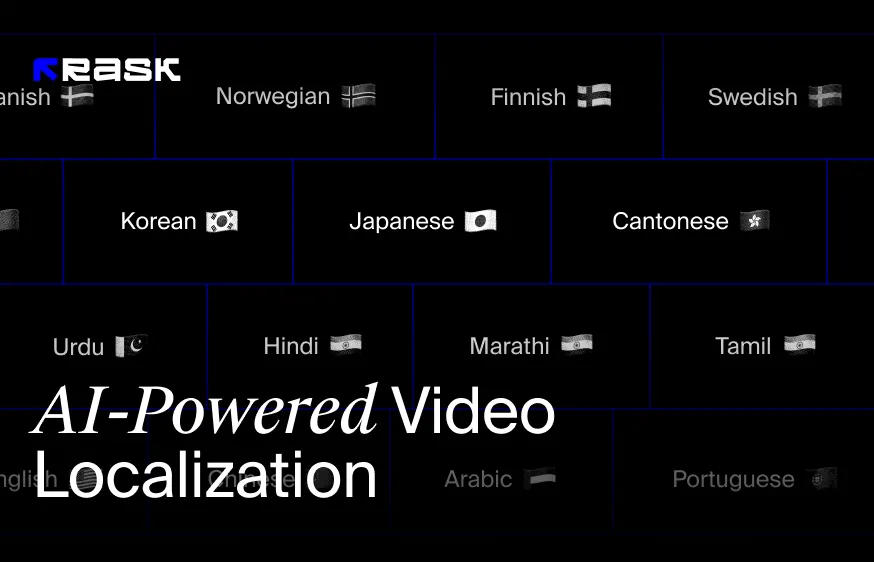Automate Video Translation and Dubbing with Rask's Localization API
In today's digital world, video content has quickly become a crucial part of the marketing strategy of the majority of companies. In addition, video content acts as a medium for communication, entertainment, and education. However, language barriers make it harder for creators and businesses to reach more audiences.
The growth of video project marketing is driven by changing user preferences. With the presence and popularity of apps like TikTok and Instagram, videos are the most preferable type of content for most people all across the world.
The tech market is also evolving rapidly, offering creators more technologies and tools to ease and speed up the video creation and translation processes. Video translation could be a sole practice or just a part of localization - which means adapting different aspects of the business (site context, a specific web page, marketing materials, and other business details) to new audiences.
While translation simply means using another language within the video, localization also covers cultural differences to make content for a new locale as authentic as possible. Localization is a time-consuming process that has long required high investments in terms of both money and human resources.
But now, it is much easier to localize your business without extra expenses or even hiring an entire team of specialists. Artificial Intelligence has been proven effective in several key aspects of the localization process, where video translation is the most common use case.
How is the Localization Process Structured?
Understanding how to localize the business and how the process works helps you start making more informed decisions when building and executing the localization roadmap. Below, we are going to describe five key stages of the video localization process.
Step 1: Plan Your Content
Being able to accurately plan and manage your content for localization is a crucial step. It involves deciding what type of video content you plan to localize according to a chosen country or language, the preferences of the new target audience, and cultural differences.
For example, if your audience prefers social media like TikTok and Instagram, then you may want to localize short vertical videos over creating long video content for educational purposes (unless you run an EdTech business).
But if your new audience loves watching YouTube videos, then you may want to create and manage both long-form and short-term content for both regular videos and Shorts.
Step 2: Choose Translation Methods (or Several Ones)
Translation of the content is an essential part of the localization process. That is why choosing the right methods will affect how successfully you can localize the web page and your overall satisfaction from the process. Needless to say, ideally, it is best to have a native language speaker with in-depth experience in translation to localize your content.
While this option is still available, hiring and onboarding this specialist is an extremely time-consuming and challenging process. In fact, you will want to have a team of translators if your goal is to localize the video content to more than just one new country.
That is where AI-powered tools can significantly simplify and speed up the video translation process without sacrificing the quality. We are going to describe the process later.
Step 3: Review Translation
Regardless of what option for translation you choose, it is always crucial to check the final result to identify mistakes and edit them before the full-scale launch.
That is why it is best to have native speakers who can review video translation, ensuring accuracy in terms of different cultural aspects of the country you are going to enter with your services or products.
Step 4: Release New Content and Finish the Localization Process
When you ensure that the translated version of your videos is mistake-free and covers all cultural differences, you are ready to launch new content to chosen platforms. These could be YouTube, Twitter, Instagram, or others since it also depends on the target audience you want to reach.
How can AI be Used for Video Translation?
Now you know that you need both time and resources to localize your business. Artificial Intelligence evolves and makes it possible for companies and creators alike to benefit from automation in different aspects of video project localization.
Let's learn how exactly AI, or AI-powered tools to be more specific, can simplify, manage, and speed up video project localization today:
Subtitle and Caption Generation
Automatic video captioning and subtitling are some of the most notable advancements that AI tools have. The market currently offers a vast selection of AI-powered subtitle translation solutions, with Rask AI remaining the leader.
In contrast to the majority of translation and automatic captioning tools, Rask AI allows creators to translate videos into English, French, Chinese, German, and other languages (there are actually over 130 language options to choose from). While half of creators still prefer to hire human specialists for these tasks. It is expected that AI captioning and subtitling tools will become more widely adopted as AI constantly learns and improves.
You can't expect that subtitling and captioning done by AI-powered tools will be error-free; they still show high accuracy and quality of the end result. These tools represent a cost-effective alternative to human translation by automatically generating captions and subtitles within minutes.
Accurate Video Translation
Best AI translation tools are working based on deep learning algorithms. Let's consider Google Neural Machine as an example. Instead of producing a direct, word-for-word translation, this technology operates with a database it's been trained on, looking for language patterns and making comparisons to deliver more accurate and reliable language translation.
The best thing about AI tools for video translation is the ability to choose from a vast range of languages. Even though this isn't true for all tools, Rask AI offers over 130 languages for video translation without requiring users to pay for each new language as they would do with human specialists.
Voiceover and Dubbing
Regular video translation usually means adding subtitles and captions. However, they aren't enough for full-scale localization. The goal of localizing the video project is to make it as authentic as possible for new target audiences so viewers won't even notice that the video was translated.
And that is where voiceovers and dubbing are a perfect way to localize your business. As the name suggests, voiceover refers to a voice recording of the script for a video, animation film, video game, and other types of media. The voice actor speaks written text and records a voice in another language.
While voiceover is much better than simple captions and subtitles, dubbing is another cyclical process. Dubbing is a post-production process that is often used in filmmaking and video production.
During this process, the newly recorded phrases are lip-synced and "mixed" with the original production phrases to create a soundtrack that is impossible or at least hard to identify from the original audio.
Both translation and dubbing have long been done by voice actors. However, AI has been shown to provide the same or sometimes even better results. Therefore, the tech market welcomed different AI-powered solutions, like Rask AI, that allow users to automate translation and dubbing services.
Automating Video Translation and Localization
Automated video translation has a vast range of benefits. For instance, video localization and translation allow creators to expand their reach to international audiences, increasing ROI, number of subscribers, and viewership.
In addition, automated video translations to new languages and voiceovers streamline the video editing workflow. Creators can easily transcribe and translate their videos to one language or more using AI-powered tools, reducing the need for manual transcription and high expenses.
Language operations play an essential part in system interconnectivity, and that is where localization API (Application Programming Interface) is a perfect solution. Localization API refers to a set of protocols and tools allowing different software apps to seamlessly communicate with localization platforms and services.
Companies and creators that introduce localization API into their video production ecosystem can streamline and automate translating and adapting content across various uses and languages. In addition, localization API ensures that every piece of content is consistently generated and localized in real-time.
Modern companies strive to automate as much as possible. Therefore, offering a smooth bridge between content management systems and localization tools requires the deployment of systems.
Although continuous synchronization is not a must-have, it guarantees that users around the world receive timely and relevant content to grow sales regardless of location and language.
The lack of integrations would become one of the biggest challenges for effective scaling. Localization APIs are used to facilitate the constant delivery of relevant content across platforms, locales, and languages.
A Quick Overview of Language Codes in Localization API
A language code is a short string representing a specific language. All languages have a three-character ISO 639-2 string, while some may also have a two-character ISO 639-1 string.
Language codes represent a language generically or specifically for a certain country. The string is displayed as lowercase text, but if the country code is included, then the text will be separated with a dash and uppercased.
Language codes are a crucial part of localization API integration as they facilitate clear identification and classification, where languages have specific codes based on international standards.
Rask AI allows content creators and companies to translate their videos into 130+ languages quickly and efficiently. With "Text-to-Voice" and "Voice Cloning" technologies, you can add a professional-quality voiceover to videos without the need for recording or hiring a voice actor. And now you can keep your own voice or your voiceover tone when dubbing. Now more than 29 languages available with VoiceClone feature
Rask's AI Localization API to Automate Video Translation and Dubbing
Rask AI is known as the leader in the dubbing and localization industry. With a sophisticated choice of languages for both translation and dubbing, Rask AI constantly expands the list of languages and functions for a user to streamline video creation, editing, and localization processes.
Rask AI recently launched the first API in the field of AI dubbing. Being a programming interface, this API acts as a bridge between different software applications, allowing them to communicate and share data effortlessly with each other. Using Rask's API enables users to integrate the functions of one application into another, simplifying and speeding up localization.
Rask APIs are the key to unlocking a world of AI translation & dubbing in your own app. This feature can be used in the following scenarios:
Case 1. Upload original video - Download translated video
Rask AI automatically translates any video, irrespective of the original language, eliminating the need for human work and editing. The localized result is ready within minutes.
Case 2. Upload the original video together with verified transcription or translation in SRT Format - Download the translated video.
This feature allows users to achieve more accurate results in video translation, leading to a higher quality of voiceover and dubbing (which can also be done with Rask AI).
Below you will see the main functions of Rask's API:
Voice Clone: Rask AI reduces the need for a voice actor since it can automatically create a digital copy of a speaker's voice from an original video. The end result is a translated video that sounds just like a human, and a voice clone feature is available in 28 languages.
Multi-speakers: Rask AI can identify the speakers in the video and support audio track translations with one or several voices based on the number of speakers in the video.
Upload SRT: If you already have a transcript or video translation, Rask AI allows you to "Upload SRT" scenarios to achieve higher accuracy during the dubbing.
How to Integrate Rask's Localization API into the Workflow
Raks AI APIs make it effortless and cheap to test hypotheses regarding whether your target audience is interested in the translations and dubbing of video or audio content.
By automating and streamlining translations and dubbing, this feature also lets you localize a large amount of video materials, especially long educational videos, without human involvement and high speed.
The localization API feature is a perfect solution for Edtech companies with learning and development departments and apps that need promotion on various markets.
Why Choose Rask's Localization API?
As we mentioned, Rask AI is the pioneer in the localization API designed especially for AI dubbing. Being here for years and recommended itself as a leading translation and dubbing tool for video content, Rask's localization API is also known for:
- Seamless and fast integration to your service;
- Ability to generate your API key directly from your Rask account;
- Opportunity to spend minutes in both: inside Rask main product or within the Rask API;
- Cost-effective solution: from $560/month when choosing a monthly business plan (includes from 500 minutes each month). From $500/month when choosing a yearly plan (includes 500 minutes each month).
The Bottom Line
With more than 6 billion internet users scattered all over the world, about 85% of us watch videos every single week. It could be a film, TV show, social media video, or educational video content. So, it isn't surprising that video is considered to be one of the most effective online marketing tools in 2024.
Limiting your audience to just English speakers means missing out on larger opportunities in terms of increased sales and higher ROI. That is why the majority of companies, brands, and creators in almost every domain prefer to translate video content and, therefore, localize it.
While some still choose human specialists for these tasks in a traditional way, Rask AI can automate and streamline the process with its new feature - Localization API. Whether you need to translate the video, generate a voiceover, or just add subtitles - Rask AI has a vast list of functions every user can benefit from.
How Much Does the Rask API Cost?— Monthly Business Plan: $560/month (includes 500 minutes each month)— Yearly Business Plan: $500/month (includes 500 minutes each month)— Enterprise Plan (Please contact our sales team)We can’t wait to see how Rask AI transforms your content creation process.
FAQ
Localization API is an application programming interface allowing software applications and localization tools to effortlessly communicate and share data with each other.
Localizing the services means adapting all business elements, including its web pages and content to another market. Instead of simply translating services and sites into another user’s language and placing them on the same web page you have for the country you originally operate in, localization ensures that every element of your services (including marketing campaigns) feels relevant and authentic for the new audience speaking another language.
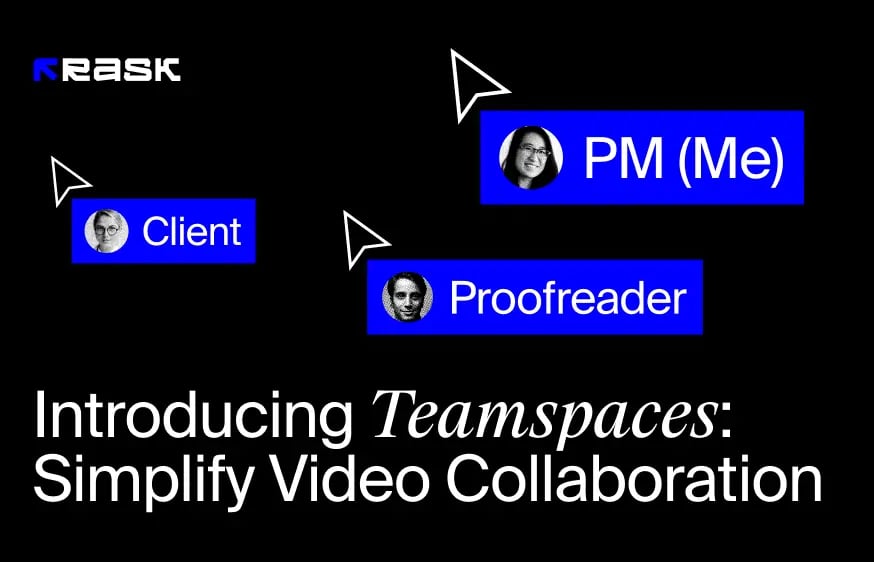
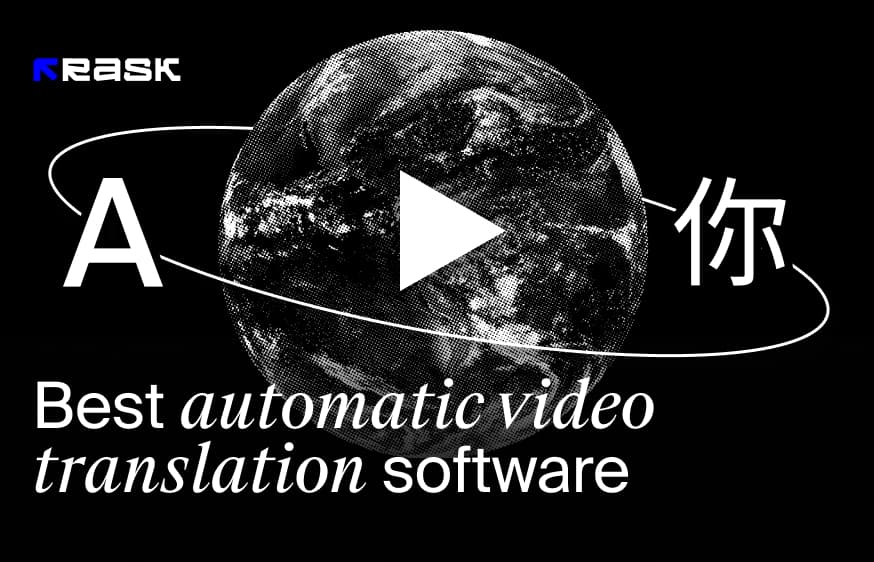
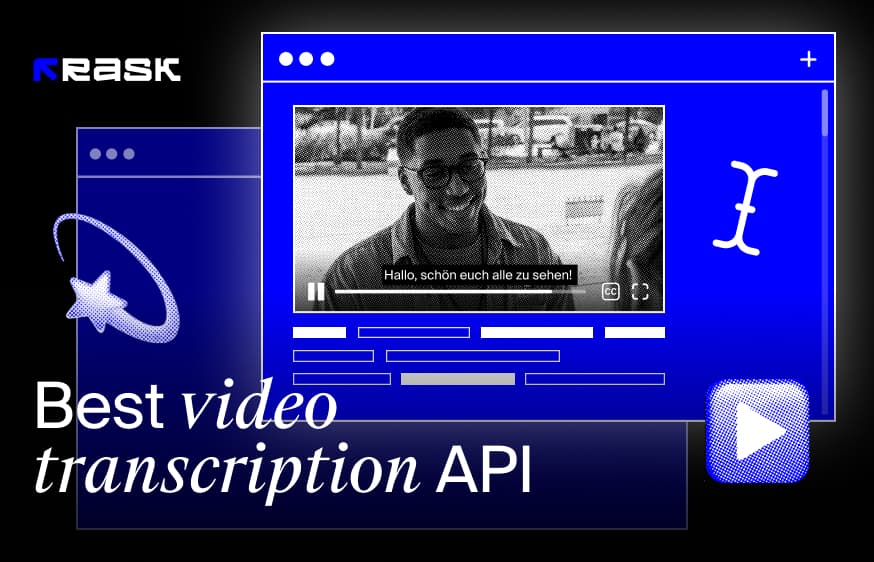

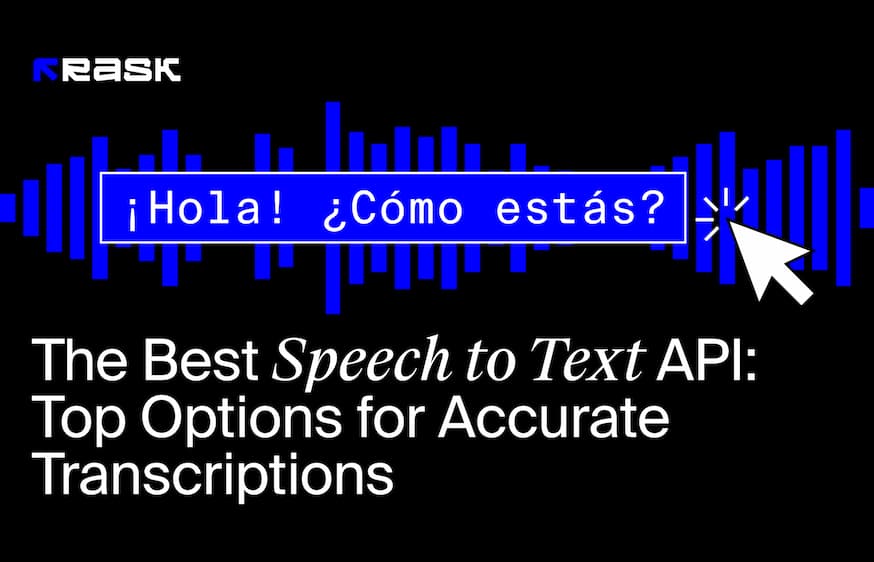
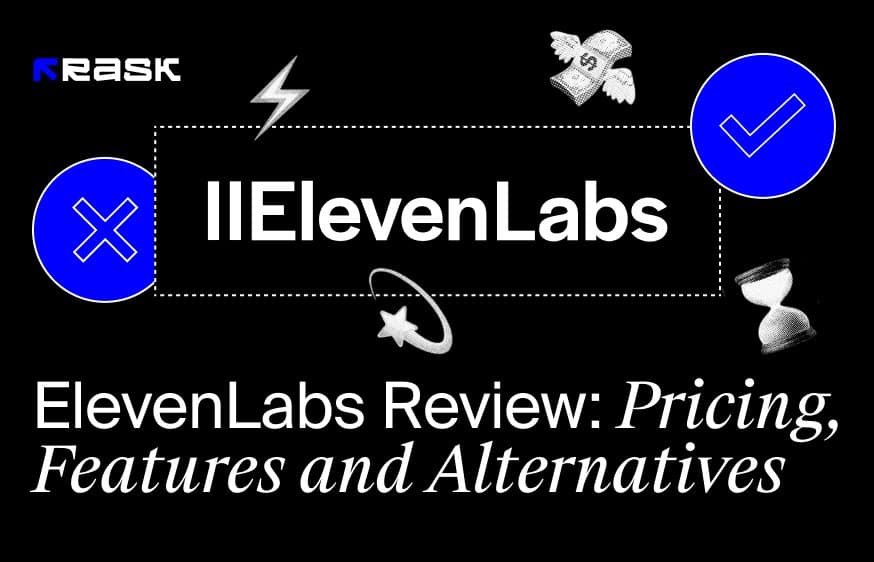
.jpg)
.webp)
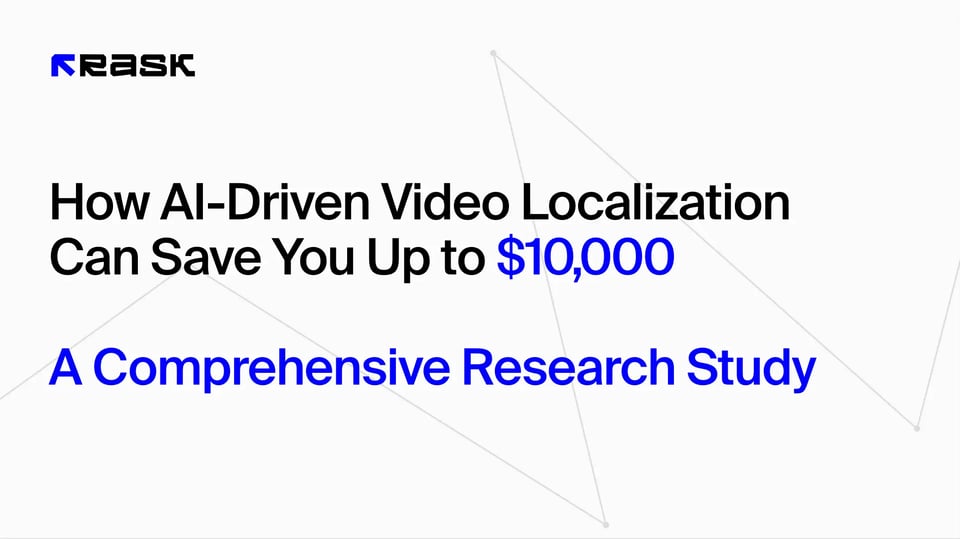
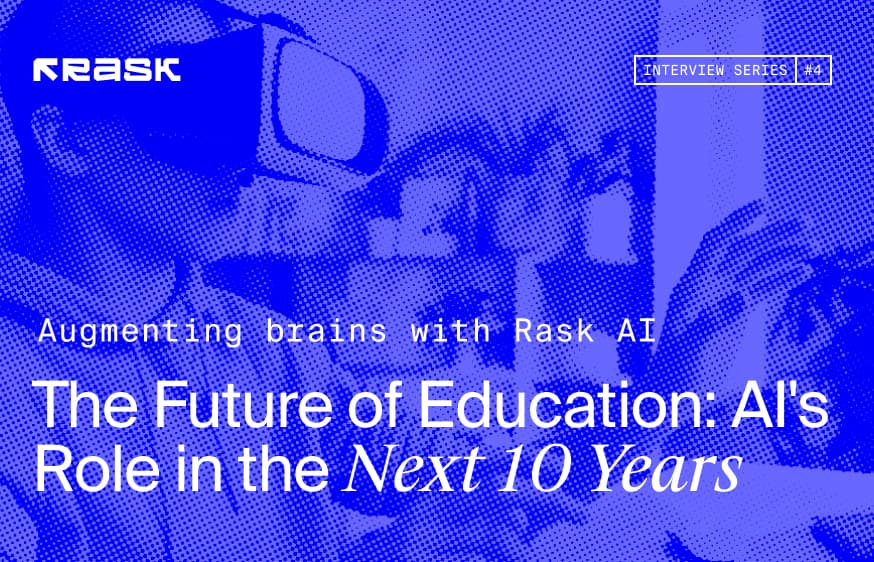
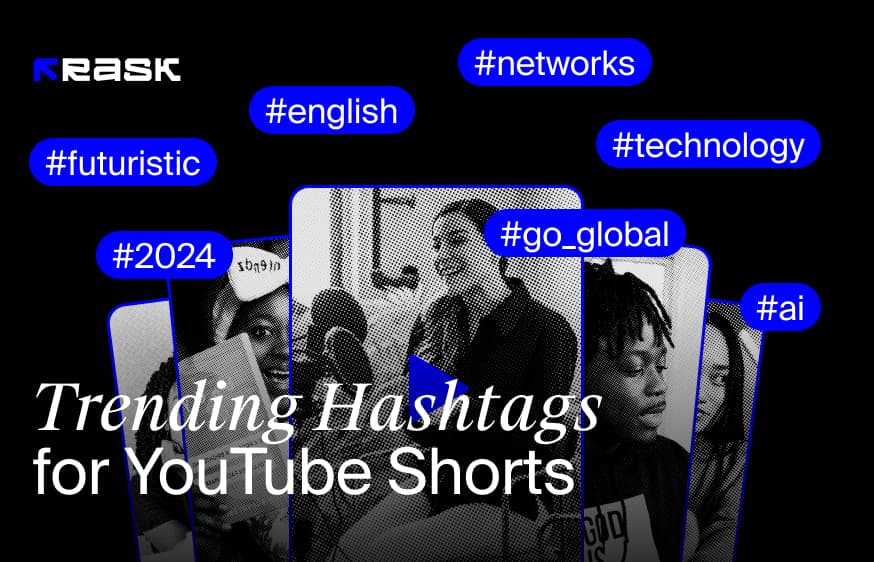
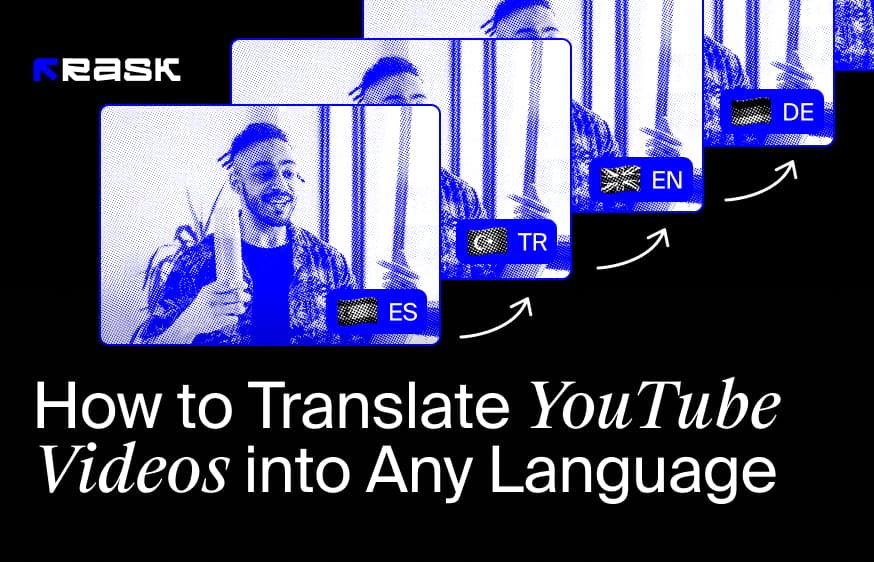
![8 Best Video Translator App for Content Creators [of 2024]](https://rask.ai/cdn-cgi/image/width=960,format=auto,fit=scale-down/https://cdn.prod.website-files.com/63d41bc99674c403e4a7cef7/6668a3dcd3175bd1d1c73c81_Best%20video%20translator%20apps%20cover.webp)
![Best AI Dubbing Software for Video Localization [of 2024]](https://rask.ai/cdn-cgi/image/width=960,format=auto,fit=scale-down/https://cdn.prod.website-files.com/63d41bc99674c403e4a7cef7/66685014f68137eb05c89c16_Cover.webp)

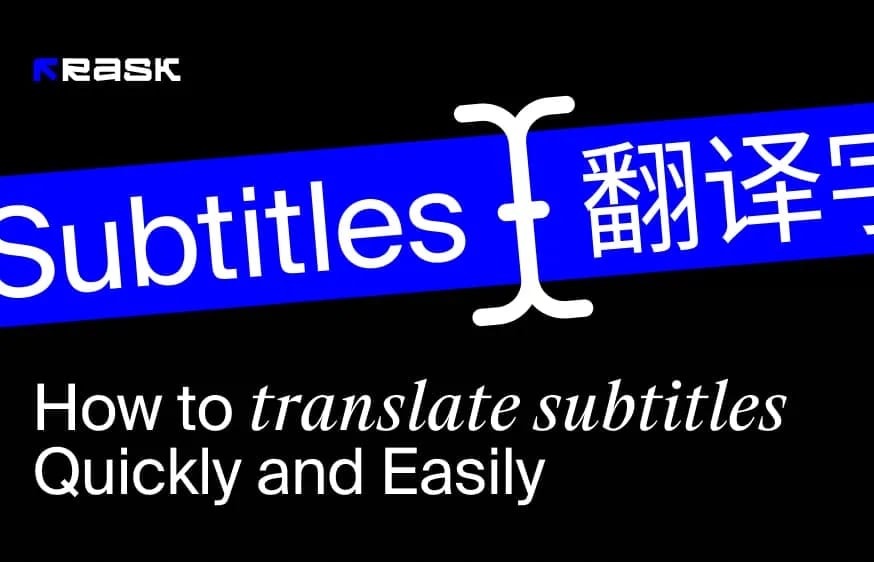
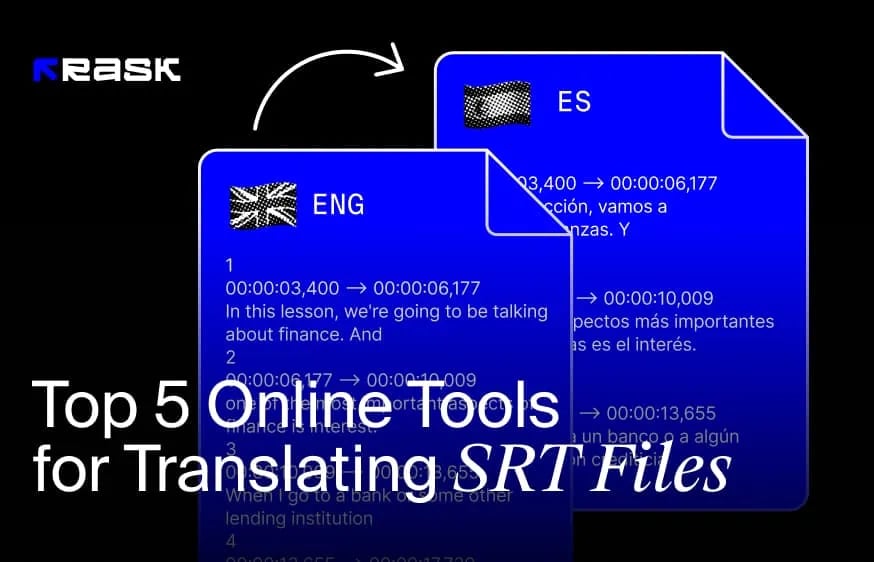

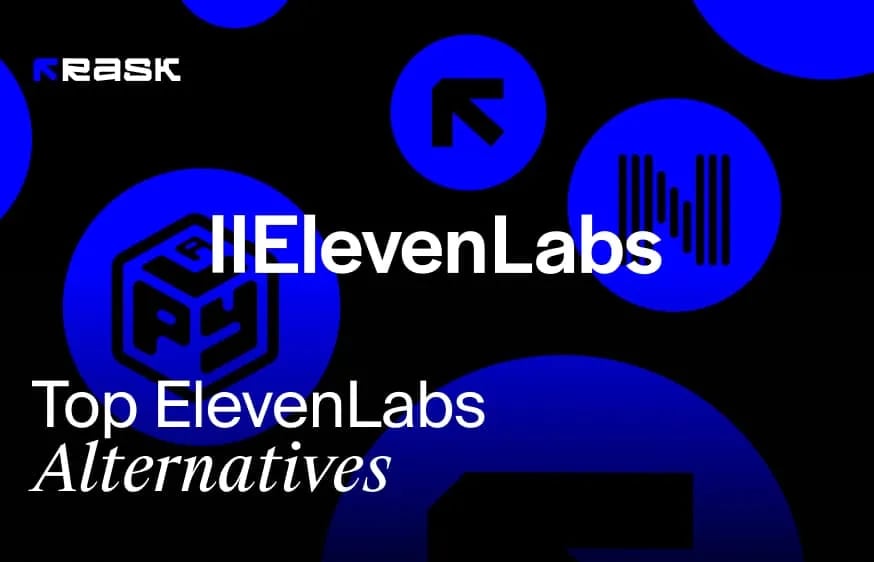
.webp)
